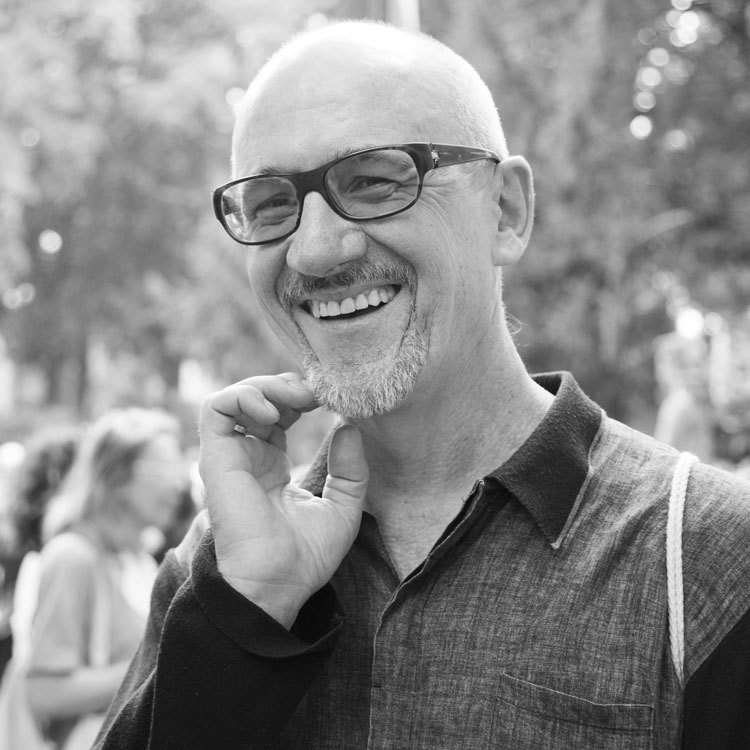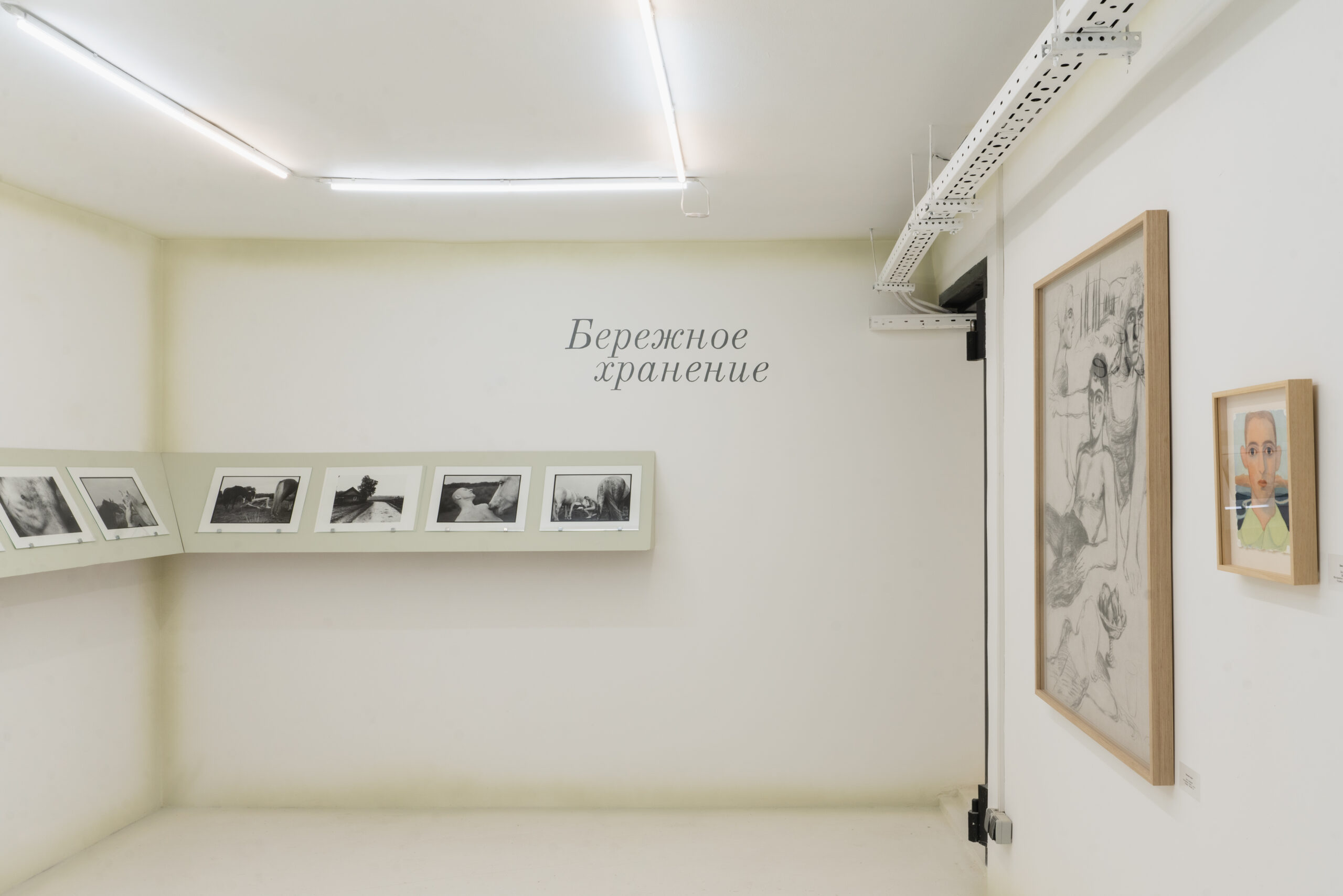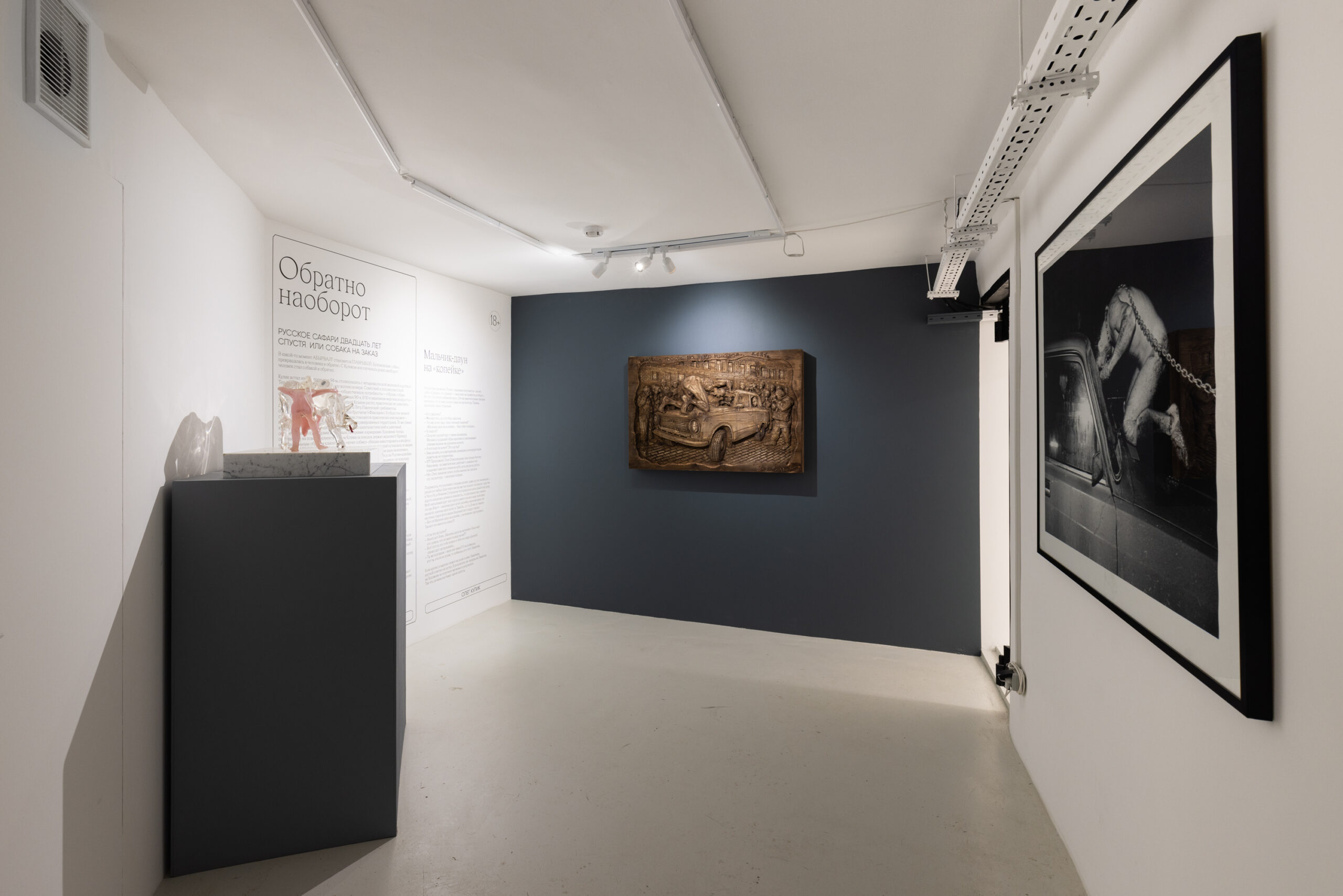
Oleg Kulik
Oleg Kulik is one of the key figures in the history of contemporary Russian art, the best-known representative of Russian actionism abroad, the first art director and expositionist of the Regina Gallery (1990-1993), curator, director of photography. In 2007, the Winzavod Centre for Contemporary Art in Moscow opened under Kulik’s curatorship with the large-scale group exhibition “I Believe”. In 2009 and 2011 Kulik was a guest director of opera at the Théâtre du Châtelet in Paris. He has participated in the world’s leading mega-projects such as the Venice Biennale, Istanbul Biennale and São Paulo Biennale, manifesta 1, exhibitions in Paris and Vienna, Barcelona and Kyoto, New York and Cologne, including “Moscow – Berlin”, Martin-Gropius-Bau, Berlin (2003), “Live Culture”, Tate Modern, London (2003), “Deep into Russia”, Pack Gallery, Milan (2010) and many others. His artworks are in the collections of the State Tretyakov Gallery, Centre Pompidou and Tate Modern.
Oleg Kulik’s artistic practice was formed in the era of disintegration of the systems and institutions of the USSR, but unlike many of his contemporaries, Moscow conceptualists and actionists, who focused on the hegemony of the text as a statement, the main tool of his first works was his own body, and his method was the radicalisation of actionist experience. Exploring the different facets of the relationship between human and animal, conventional rules and deviations, he made history through actions that adopted the animal’s behaviours by transforming himself into a dog. These practices have been continued in installations, performances and photo-documentations, often co-authored with Alexander Brener and Mila Bredikhina (“Dog House”, Fargfabriken, Stockholm, 1996, “Pavlov’s Dog”. V-2, Rotterdam (as part of the European Biennial manifesta 1), 1996, “I Bite America, America Bites Me”, Deitch Projects, New York, 1997, and others).
In the 1990s, Kulik became a symbol of the country’s new culture in search of a new artistic language. His own search subsequently led him to work with a variety of techniques, including sculptural installation, painting and photo collage. Photography is one of the most important milestones in Kulik’s work. From staged series on animal-human relations (“Deep into Russia” (1993), “The Family of the Future” (1997), “White Man’s Fears” (1999-2000)), where the artist consistently explored and challenged stereotypes and perceptions of the family’s archaic tradition, he moved on to landscape in the series “Slogans” (2003): with the help of almost transparent filters of plexiglas screens placed in the landscape, familiar vistas are distorted, immersing the viewer in the space between reality and the phantom, elusive memories thereof. In photography, Kulik reflexes the impossibility of returning to nature as Truth: it is prevented by obstacles and barriers, both physical and mental, hidden inside our consciousness and striving for freedom through bestial aggression. In his practices Oleg Kulik destroys the socially constructed taboos, examining archetypes through the lens of denying their sacredness and inviolability. Photographic documentation of actions, staged photo series, sketches of installations and sculptures of various small and medium-sized forms make up the archive, which can be consulted to trace the most important stages in the development of his artistic language.



